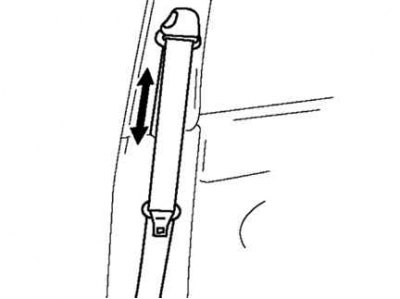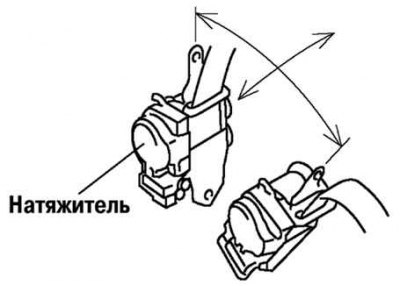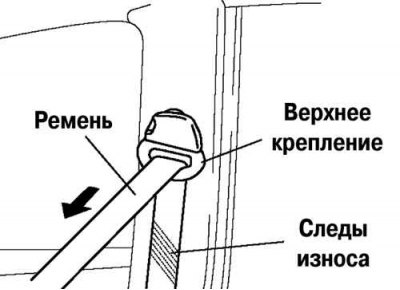Belt
Make sure the seat belt is installed correctly.

Pic. 8.69. Seat Belt Check
Check the seat belt for damage and deformation of metal elements (pic. 8.69).
If there is damage, replace the belt.
Tensioner
Make sure the belt is smoothly extended and retracted.
If not, replace the seat belt.
Check that the seat belt pretensioner engages when the belt is pulled out quickly.
If not, replace the seat belt.
Remove the seat belt tensioner.

Pic. 8.70. Checking the seat belt tensioner
Check that the seat belt does not lock when the belt tensioner is tilted up to 15°from its original position and locks when the belt tensioner is tilted 40°or more (pic. 8.70).
If not, replace the seat belt.
Pull the belt out completely to change the lock mode from ELR to ALR.
Check that the seat belt tensioner makes a clicking sound when the belt is slowly retracted.
If no sound is heard, the lock mode has not changed.
If there is no click when rewinding, replace the belt.
Make sure the belt locks when pulled out.
If not, replace the seat belt.
Make sure the lock mode changes to ELR when the belt is fully reeled in.
Otherwise, replace the seat belt.
Tensioner load limiter.
Attention! When the load limiter is in operation, the belt and top mount rub against each other hard, leaving signs of wear.
A worn belt cannot perform the function of protecting passengers.
Be sure to replace the seat belt after the load limiter has been activated.

Pic. 8.71. Checking Seat Belt Wear
If the vehicle has been in a collision, pull the belt out of the tensioner and inspect it to make sure the belt shows no signs of wear (load limiter failed) (pic. 8.71).
If not, replace the seat belt.
